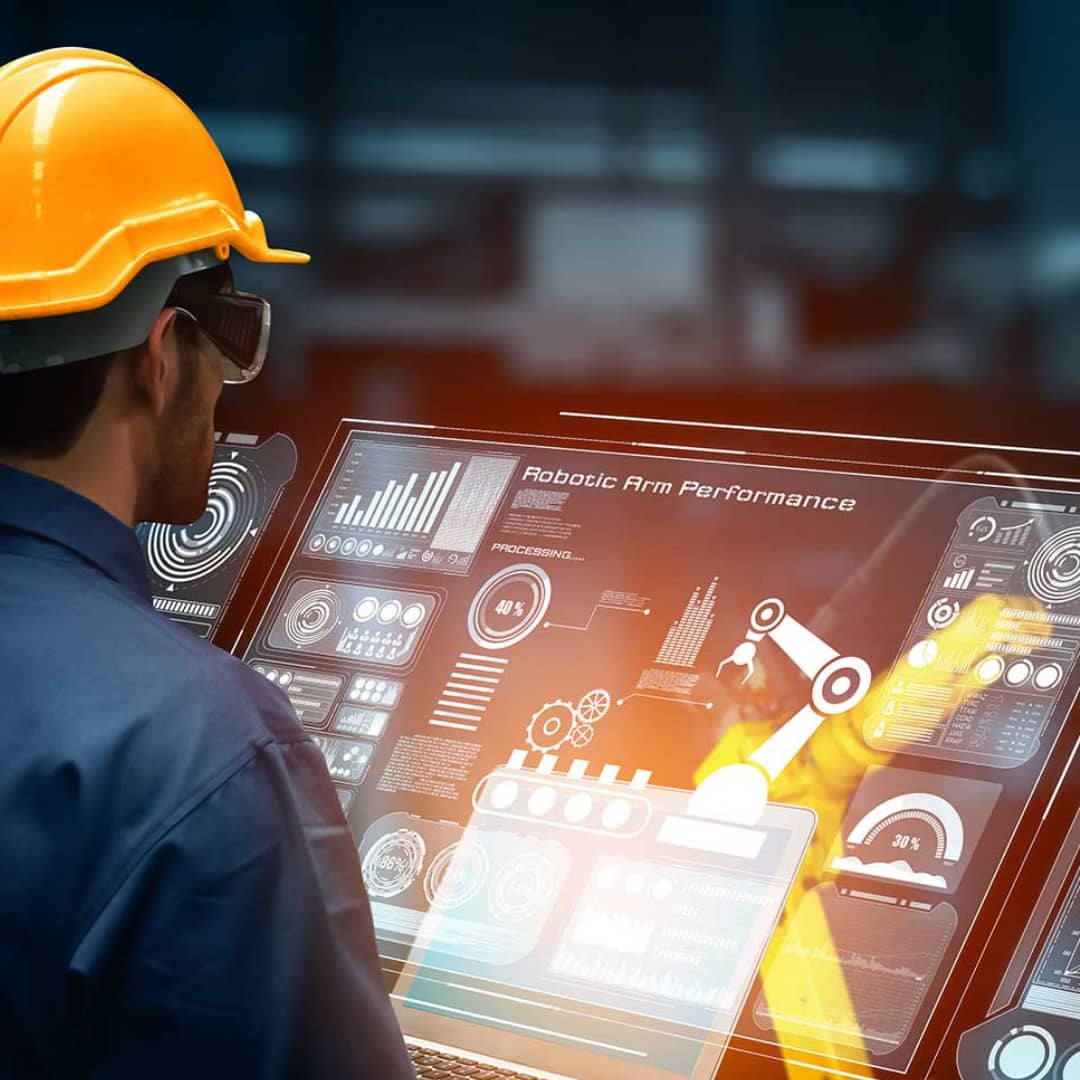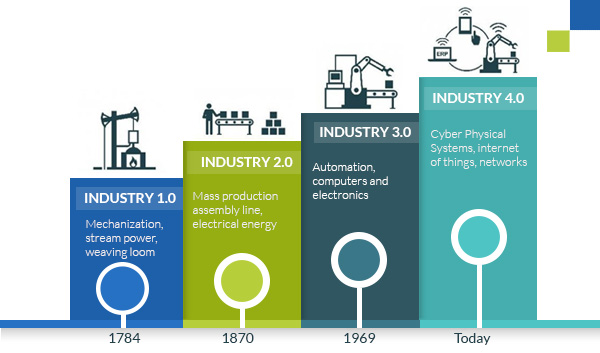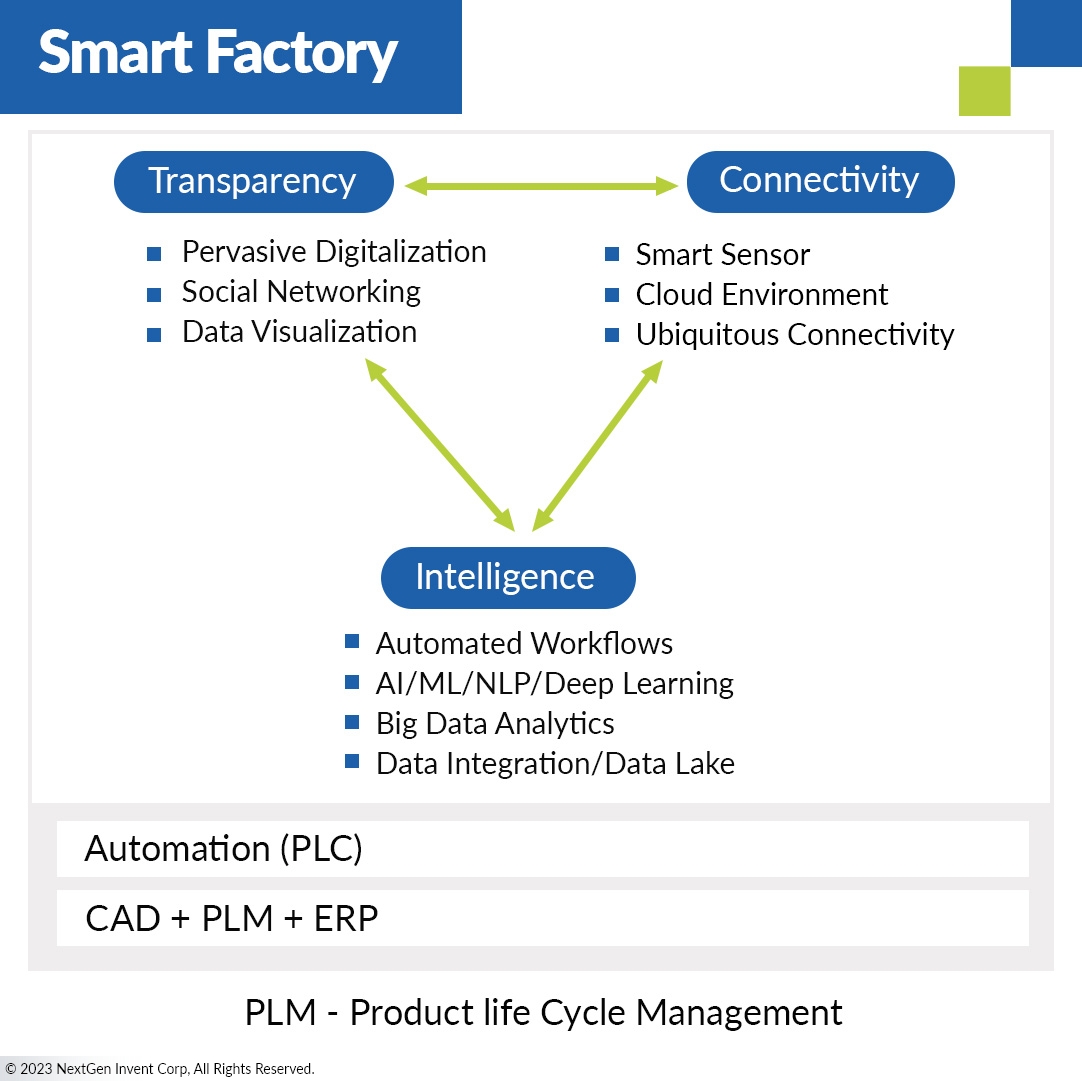Revolutionizing Manufacturing: An Inside Look at the Smart Factory
The first two industrial revolutions refer to a period in history, beginning in the 18th century, characterized by a rapid acceleration of technological and societal change that has continued to the present day. This period saw a shift from agrarian societies to urbanized and industrialized societies, driven by the development of new factory-based production processes in the late 18th and early 19th centuries. This revolution brought significant changes in technology, socioeconomics, and cultural conditions, as well as advancements in transportation, production, and communication, transforming everyday life. Innovations continued to spread globally in the late 1800s, leading to increased efficiency in manufacturing and a shift from agricultural to industrial economies.

The Third Industrial Revolution, or digital revolution, began in the late 1900s, characterized by automation and digitalization resulting from the deployment of electronics and computers, the invention of telephones, and the internet, as well as the discovery of nuclear power. With each of the previous three industrial revolutions, a scientific age of mass production was followed by a rise in digital technology, which changed the world dramatically. The current age is one where boundaries are being challenged among physical, digital, and biological realms, with industries being disrupted around the world. This 21st-century smart digital infrastructure is giving rise to an aggressive new sharing economy, which is changing how we run, feed, and move our economic lives.

Industrial Revolution
The fourth industrial revolution has been around since 2011, It encompasses the Industrial Internet of Things (IIoT) and smart manufacturing, and marries physical manufacturing and operations with intelligent digital technologies, machine learning, and big data. In essence, the Fourth Industrial Revolution is the trend toward automation and data sharing in manufacturing technologies and processes, encompassing Cyber-Physical Systems (CPS), the Internet of Things, the Industrial Internet of Things, cloud computing, cognitive computing, and AI.
Enabling Data-Led Decisions in Smart Factory Technology
Emerging technologies are giving manufacturers the power to capture and process data from their operations, leading to an explosion of solutions that can mine insights in real time. Smart manufacturing in Industry 4.0 is about much more than connecting devices, cognitive computing, data, and insights into people, machines, and materials.
It relies heavily on automation, machine learning, real-time data analytics, and collaboration. The Industrial Internet of Things allows manufacturers to automate and control activities remotely, with data-driven decisions, improving operating efficiency. It is an approach that uses data from the equipment on the shop floor, operators, supply chains, and more, enabling manufacturers to make better decisions. All this while working to lower costs and increase operational efficiency. The data-driven decision-making system is intended to guide people in the industry to enhance production on the shop floor using lean and intelligent production.
Here are three ways you can enable data-led decision-making into your smart factory:

Transparency
A key driving force for smart factories is the increase in transparency and flexibility. Increased transparency allows manufacturing industries to deal with an increase in individualized products, reduced batch sizes, reduced costs because of an increase in automation and improvement in efficiency. Transparency can be achieved via:
Pervasive digitalization means change is normalized and happens all the time, thus providing a quicker delivery timeframe and increasing market share. Pervasive digitalization brings a change in communication and reduces the need for structured organizations.
The integration of social networking principles with the Internet of Things (IoT) technology has the potential to revolutionize asset management. By creating a data-sharing platform based on social network principles, machines can collaborate and work together to create more efficient, resilient, and productive systems.
Data visualization techniques allow for real-time data to be displayed in an intuitive and user-friendly manner on smart terminals. This makes data easily accessible and usable for real-time decision-making.
Connectivity
Enabling connectivity in a smart factory technology means reaching a state of sustainable productivity, self-correction, and quality leading to high profitability. Connectivity in a smart factory technology also empowers workers to make innovative, productive, and impactful improvements. Smart connected factories incorporate technologies like:
Smart sensors on the factory floor will lead to the development of decision-making algorithms that enable the autonomy of interconnected manufacturing systems. The data collected by these smart sensors can be used to minimize downtime, enhance machine performance, and implement predictive maintenance programs. Furthermore, it can aid in enhancing product quality, ensuring safety, and increasing production output.
Cloud computing technology within a smart manufacturing framework has resulted in the development of decision-making algorithms that can be executed in a cloud-based environment. This allows for the storage, processing, and retrieval of data from any location, providing greater flexibility and accessibility.
Ubiquitous connectivity – The widespread use of sensors and interconnected production equipment generates a vast amount of data for manufacturers. This data empowers them to make more informed and efficient decisions in the factory, leading to quantifiable continuous improvements.
Intelligence
With more intelligence at the disposal of manufacturers, enabled by AI and automated workflows, they can now capture more data, process, store and analyze it closely. Using this data, manufacturers can make adjustments in real-time.
Automated workflow and production in a smart factory technology allow for minimal human intervention and are highly reliable. Automating repetitive or routine tasks, such as data entry, scheduling, or communication, allows for more efficient and accurate completion of these tasks. Automated workflows increase revenue, uptime, quality, reduce costs and waste.
AI/ML/NLP/Deep Learning are being used to analyze and extract insights from large amounts of data. AI and ML are used to automate decision-making and improve efficiency, while NLP is used to analyze and understand natural language data, and deep learning is a specialized subset of machine learning which uses neural networks to model complex patterns in data.
Data analytics provide valuable insights into the production process, allowing manufacturers to improve efficiency, product quality, and overall performance. Enhancing product quality in real-time, allowing manufacturers to quickly identify and correct any issues that may arise. This can help to reduce waste and improve the overall quality of the final product. Predicting when a machine or piece of equipment is likely to fail, so that maintenance can be scheduled in advance can decrease downtime and make factories proactive rather than reactive.
Data integration and data lakes play a critical role in revolutionizing manufacturing by providing manufacturers with the ability to collect, store, and analyze large amounts of data. Integrating data from various sources, manufacturers can develop algorithms that can make decisions based on real-time data, which can help to improve the efficiency of production processes.
Conclusion
In summary, the implementation of technology is revolutionizing the manufacturing industry by automating processes, streamlining operations, and leveraging AI-driven insights. This enables businesses to make data-led decisions and improve efficiency, resulting in cost savings and increased productivity. The Smart Factory technology also allows for increased customization and personalization of products, as well as improved monitoring and tracking of production processes. As technology continues to evolve, it’s an exciting time to see what new possibilities will arise for the manufacturing industry.
Stay In the Know
Get Latest updates and industry insights every month.
